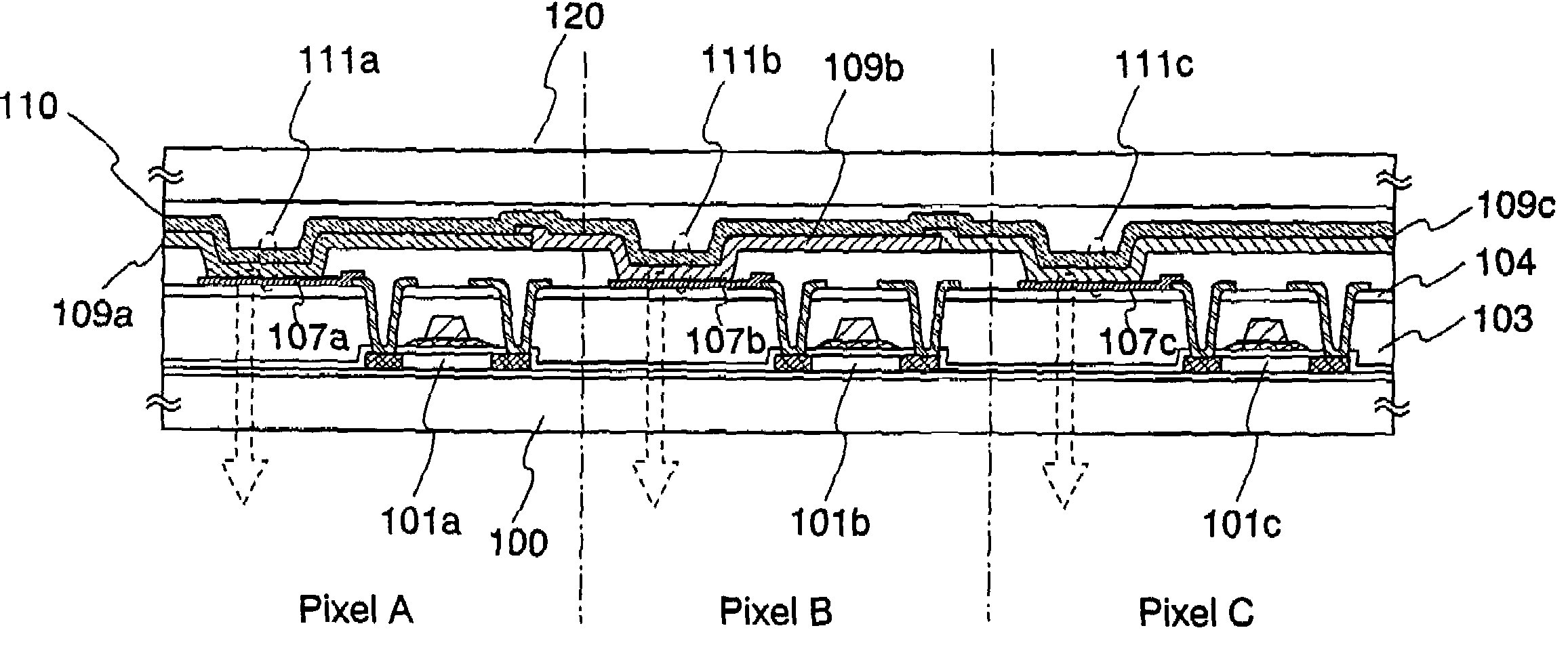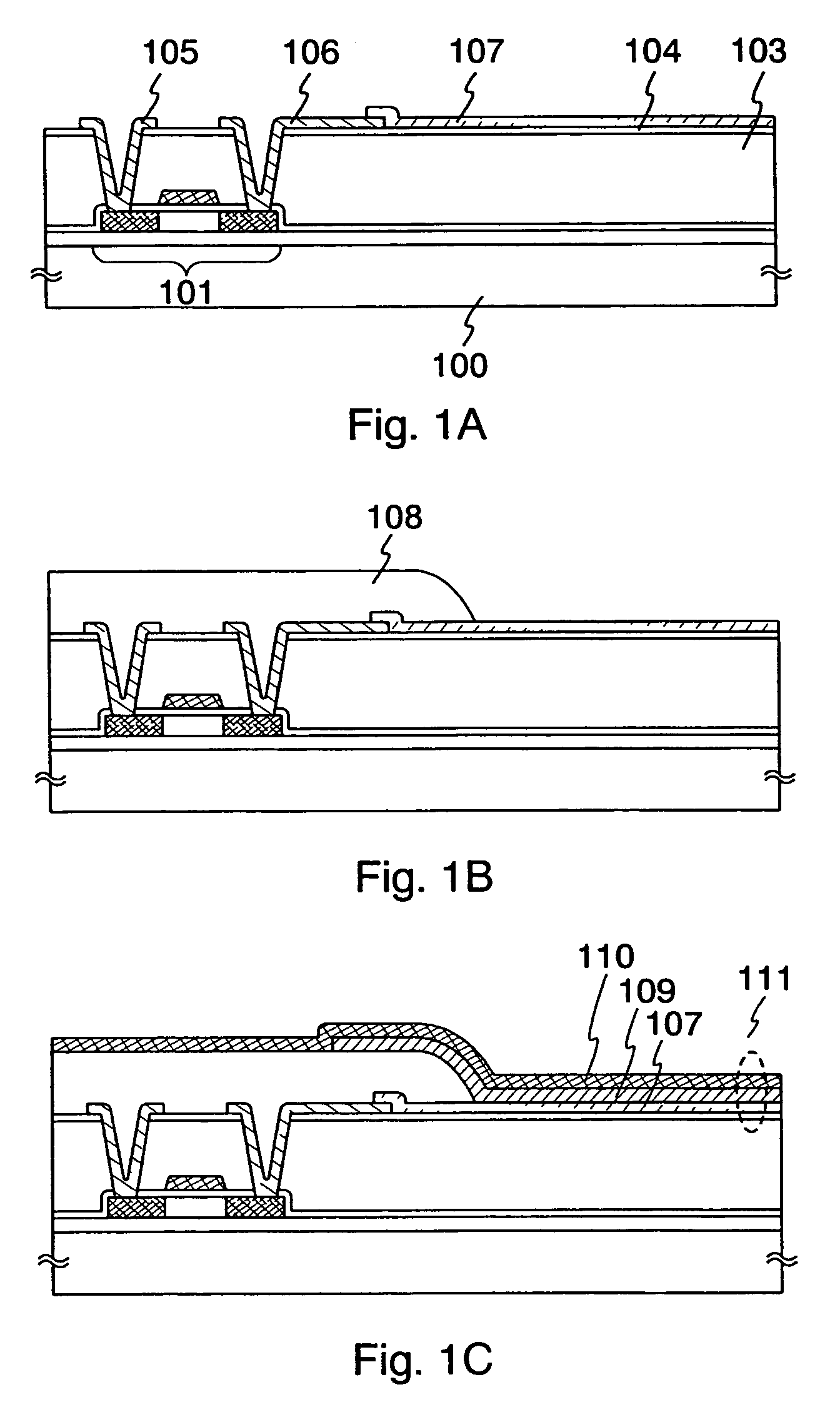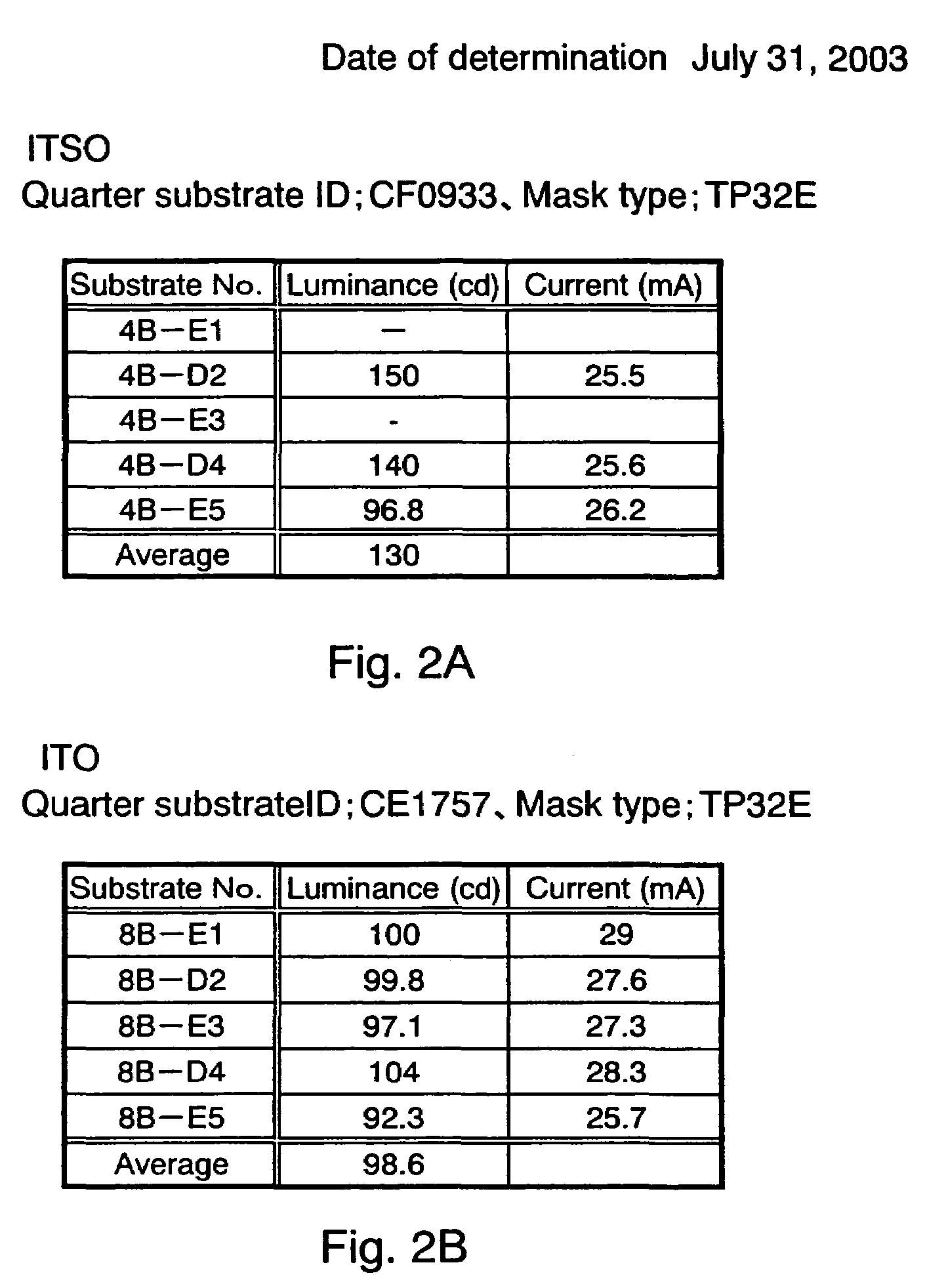Light emitting element including a barrier layer and a manufacturing method thereof
a technology barrier layers, which is applied in the direction of discharge tubes/lamp details, discharge tubes luminescnet screens, electric discharge lamps, etc., can solve the problems of high power consumption, inability to obtain sufficient luminance, and difficulty in solving the stability problems of light emitting elements, so as to improve the efficiency of hole injection into the hole injection layer and enhance the light emission characteristics
- Summary
- Abstract
- Description
- Claims
- Application Information
AI Technical Summary
Benefits of technology
Problems solved by technology
Method used
Image
Examples
embodiment 1
[0087]A light emitting device manufactured according to this embodiment will be described with reference to FIG. 1.
[0088]A first interlayer insulating film 103 is formed with silicon oxynitride films. Specifically, the first interlayer insulating film 103 is formed by laminating a 30-nm-thick first silicon oxynitride film and a 200-nm-thick second silicon oxynitride film by plasma CVD to a thickness of 230 nm in total. The second interlayer insulating film 104 is formed with a silicon nitride film with a thickness of 100 nm by sputtering using silicon as a target.
[0089]A hole injection electrode 107 is formed with an ITSO film to a thickness of 110 nm by sputtering using a target (934 mm×158 mm) having a composition ratio of 85 wt % indium oxide (In2O3), 10 tin oxide (SnO2), 5 wt % silicon oxide (SiO2), and a sputtering gas of 120 sccm Ar and 5 sccm oxygen at a pressure of 0.26 Pa and with a DC electrical power of 3.3 kW. The hole injection electrode 107 is formed by patterning the ...
PUM
 Login to View More
Login to View More Abstract
Description
Claims
Application Information
 Login to View More
Login to View More - R&D
- Intellectual Property
- Life Sciences
- Materials
- Tech Scout
- Unparalleled Data Quality
- Higher Quality Content
- 60% Fewer Hallucinations
Browse by: Latest US Patents, China's latest patents, Technical Efficacy Thesaurus, Application Domain, Technology Topic, Popular Technical Reports.
© 2025 PatSnap. All rights reserved.Legal|Privacy policy|Modern Slavery Act Transparency Statement|Sitemap|About US| Contact US: help@patsnap.com



